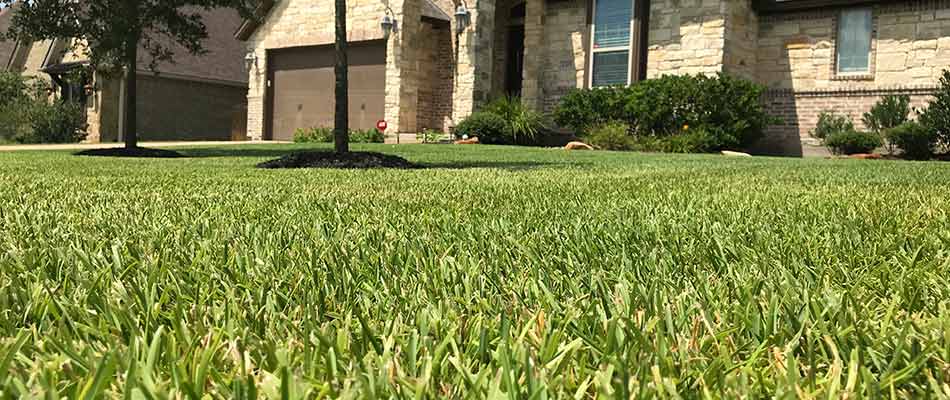
Most know that beautiful lawns do not happen by chance, but are the product of careful planning. A key factor in maintaining a healthy and luscious lawn is a regular fertilization program. Here is some information regarding the components involved in lawn fertilizers, as well as how to correctly apply them on your lawn.
Why fertilize?
Achieve a healthy, green lawn
Promote new growth
Reduce and control weeds
Replace lost nutrients
Aid in recovery from foot traffic
Many people head out to their local Home Depot or Lowe’s to pick up a bag or two of fertilizer. Most fertilizers have three numbers on the bag…Nitrogen-Phosphorus-Potassium.
What do these numbers mean?
These numbers represent the percentage by weight of each ingredient. For example, if the bag weighs 30 lbs and the first number on the bag (Nitrogen) is 15, the bag then contains 4.5 lbs of Nitrogen. For example:
30lb x (.15N) = 4.5lb of Nitrogen
30lb x (.05P) = 1.5lb of Phosphorus
30lb x (.10K) = 3lb of Potassium
There are a variety of different number combination fertilizers in the market: 15-5-15, 10-5-5, 15-0-15…etc. It is important to remember that the higher the number, the more of that element is in the bag. If your lawn needs more potassium, buy a bag with a bigger number in the potassium spot.
How much fertilizer should you apply?
The next critical step is determining how much to apply per 1000 sq. ft:
St. Augustine Grass: 4-5 lb total N per 1000 sq. ft. per year over 2-3 applications
Bermuda Grass: 5-6 lb total N per 1000 sq. ft. per year over 2-3 applications
Zoysia Grass: 3-4 lb total N per 1000 sq. ft. per year over 2-3 applications
Depending on your grass type, the total annual Nitrogen is divided up over 2-3 applications a year. In the Brazos Valley, the fertilizer application rate for Nitrogen in St. Augustine grass is 1.5lb per 1000 sq. ft per application. You take that rate of application divide it by the percentage of Nitrogen on the bag, then multiply that by 100. For example:
(1.5 lb ÷ 15% N) x 100 = 10 lb. of fertilizer per 1000 sq. ft.
To see how much of the other nutrients you applied in the 10 lb. of fertilizer, use this formula:
10 lbs fertilizer x .05% P = 0.5 lb P per 1000 sq. ft.
10 lbs fertilizer x .10% K = 1.0 lb K per 1000 sq. ft.
Contact us with questions or for a lawn inspection!
Next time, we will take a look at how to develop a lawn fertilization program. As always, if you have any questions or would like us to come out and take a look at your lawn, contact us or take a look at our services so we can get to work!
